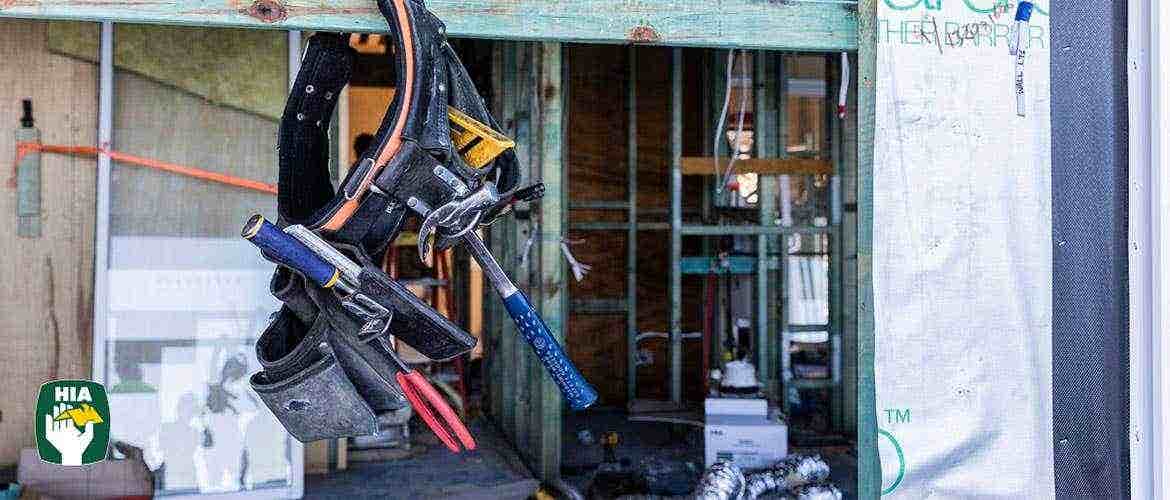With NCC 2022 now commenced for construction approval applications submitted from 1 May 2023, it is timely to refresh your knowledge of the key things that have changed for residential construction.
What are the major changes that have been applied from 1 May?
Putting it simply, NCC 2022 is a substantial amendment. The changes include new requirements and changes to existing requirements across Volumes One, Two and Three.
Importantly, NCC 2022 is being implemented in two stages, with the majority of changes taking effect in NSW 1 May.
A further transition period applies for the energy efficiency and condensation management changes which commence from 1 October 2023.
Notwithstanding this, there were a range of substantial changes that commenced from 1 May this year that will affect the design and construction of houses and apartments and will require changes to many standard building materials you currently use.
Some of the main changes to be aware of include:
Complete restructuring of the code and re-ordering of Volume Two
Volume Two looks very different this year. This is due to the restructuring and renumbering of the full code. There are now two documents – Volume Two and the Housing Provisions. The Livable Housing Design Standard is a separate third document.
While this doesn’t affect compliance, it’s worth pointing out since it will take some time to get familiar with the new layout and clause numbering.
It is also worth noting NCC 2022 retains reference to the previous NCC 2019 clause numbering. So unless there has been a technical change to a provision, old test reports and other documentation will remain valid even if they reference the NCC 2019 numbering.
Internal waterproofing changes
Volume One and Two contain a range of waterproofing changes for both internal and external waterproofing including a complete restructuring of the provisions.
Volume Two includes a re-introduction of the wet area Acceptable Construction Provisions (ACP) that was last included in BCA 2011. This can be adopted as an alternate compliance option to AS 3740.
Other changes include:
- Adoption of the revised AS 3740:2021 which includes changes to classification of different types of showers, updated figures for treatment of shower niches and strip drains.
- Walls of a shower area must be waterproofed to a height of 1800mm.
- Provisions for WCs with a hand-held bidet spray installation.
- Fibre-cement sheeting supported on a structural floor as an allowable water-resistant substrate (as opposed to only compressed cement sheet in NCC 2019).
- Concrete that has been treated to resist moisture can be used as a surface material and inclusion of cable floor heating treatment.
Falls to floor wastes
Regardless of which approach is taken to waterproofing compliance in internal wet areas, NCC 2022 demands falls to all floor wastes located in a wet area. This applies regardless of whether the floor waste is a ‘required waste’ under the wet area waterproofing standards, or is just included to simplify the plumbing design.
All floor wastes in wet areas will require a gradient to the waste of between 1:50 and 1:80 in the surrounding floor.
Clarification of external waterproofing requirements
The National Construction Code (NCC) 2022 now makes it clear when and where the external waterproofing provisions apply and when the external waterproofing standard AS 4654.1 & 2 applies.
The use of the Standard will apply to:
- flat roofs and roof terraces,
- balconies and terraces and other similar horizontal surfaces located above internal spaces of a building
- exposed joints in roofs, balconies, podiums, or similar horizontal surface part of a building.
The specific application and exemptions for external waterproofing in housing construction can be found in NCC Volume 2 Clause H2D8.
Changes to plumbing and drainage, such as branch drain connections
Plumbers and builders will need to pay close attention to the design and installation for the branch drain connections for sanitary plumbing installations for two storey houses.
NCC 2022 adopts the revised plumbing standard AS/NZS 3500.2:2021, which contains changes for typical connections arrangements for graded branch drains entering the main drain. This includes requiring a DN100 branch drain to connect at an elevated incline of 15 degrees.
There is potential if you have not designed the sanitary drainage system with this change in mind, that the first-floor ceiling joists may not be deep enough to accommodate the added gradient.
What else has changed?
The changes in NCC 2022 are extensive and can’t easily be covered in a single article. Some other changes you should be aware of include:
- Weatherproofing changes for cladding on Class 2-9 buildings.
- Fire safety and cladding, and expansion of list of acceptable ancillary elements for walls.
- Revised and updated acceptable construction practices for masonry, slabs, glazing, steel framing, gutters (including sheet roofing overhang) and downpipes.
- Changes to encroachment provisions to capture elements extending beyond the vertical projection of an adjoining building.
HIA will continue to support the industry over the implementation period. Dedicated workshops on the major changes and a range of resources are available now, and more are being developed.
To continue to support industry a workshop to explore the energy efficiency and condensation changes in more detail will be held in Newcastle on the 26th July.
Find out more about the NSW NCC 2022 adoption dates and the latest updates.
Printed copies of the NCC 2022 are available for purchase now. Buy Volume One & Two as a set or individually. As an exclusive bonus, you will also receive HIA’s Summary of NCC 2022 Changes with each volume.
To find out more, contact HIA’s Building Services team on 1300 650 620.
Craig Jennion
Housing Industry Association
Executive Director - Hunter


